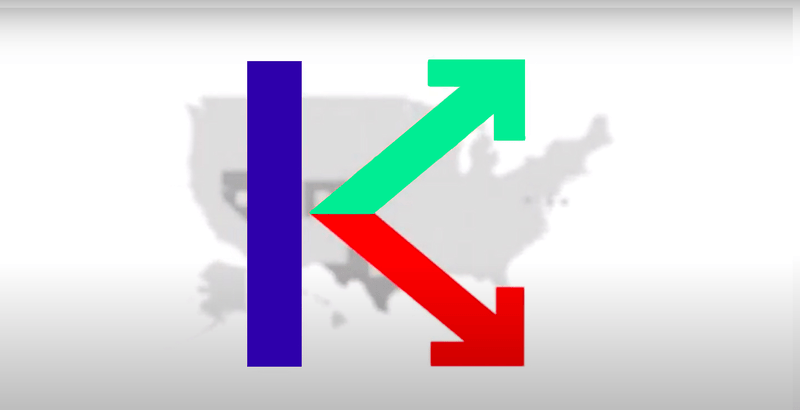The Fallout from the Pandemic’s K-Shaped Recession May Be Felt By Students for Years. How Can Schools Head off this COVID Classroom Crisis?

Get stories like these delivered straight to your inbox. Sign up for The 74 Newsletter
This article is part of a series examining COVID’s K-shaped recession and what it means for America’s schools. Read the full series here.
From the very beginning of the pandemic, the economy responded to COVID-19 in a way that defied conventional wisdom. Many markers typically used to predict how severe a recession will be, and how to confront it, were completely out of whack.
Unemployment immediately shot up to levels far higher than those seen in the worst of the Great Recession of 2008. Small businesses closed at a precipitous rate, with little certainty about whether they would reopen. Many low-income workers were laid off, while others, forced to keep reporting to work despite spiking rates of viral transmission, lost child care as schools shuttered. But at the same time, stock portfolios swelled and affluent consumers flooded delivery services with orders for luxury goods to make homes that now doubled as offices ever more comfortable. For the well-off, the recession was over within weeks — if it was even felt at all.
Even small changes in the way money circulates within a city or neighborhood ripple through the local economy. This one was a shockwave. Wealthy Americans ordered fancy meal kits online and signed up for wine tastings on Zoom rather than spending at the neighborhood restaurants, nail salons, yoga studios and dry cleaners that had kept their less affluent neighbors employed.
John Friedman and Raj Chetty realized they were seeing something unusual. Co-founders of Opportunity Insights, a team at Harvard University that researches education’s potential to lift children out of poverty, they feared the pandemic had worsened already long odds.
The economists took the unprecedented step of asking credit card companies, payroll processors and other businesses that track money as it moves through the economy in real time to turn over what are essentially trade secrets. Using that information, the researchers built a nationwide online pandemic tracker capable of providing a down-to-the-day snapshot of who is spending and who is struggling, by income level, city, state and county and, in some instances, by zip code.
The data quickly revealed stunning implications on virtually every front.
In place of a typical recession’s V shape, in which people across the socioeconomic spectrum experience both the downturn and the subsequent recovery together, the economists saw a K. Affluent Americans at the top of the K bounced back right away — much more quickly than in a typical recession. Low-income families on the bottom, by contrast, were disproportionately impacted: more likely to be unemployed, quarantined in overcrowded multi-generational housing and experiencing higher rates of infection and death.
The inequities on display were not new, but for many people, the awareness of how profound and widespread they are is. Over the last year and a half, prosperous Americans who can afford iPads, reliable internet and tutors have woken up to headlines showing children forced to log into virtual classes from parking lots — or wherever they could find a Wi-Fi signal — skipping school to work at their own jobs and isolated, alone in COVID’s mental health crisis.
The Opportunity Insights tracker contains one academic dataset: student participation and progress on the math app Zearn, which one-fourth of the nation’s K-5 students have access to. Immediately after schools closed, use of the app among low-income students “completely dropped off,” notes Zearn CEO Shalinee Sharma. As they started logging on again, a yawning gap became apparent. A year into the pandemic, these students’ progress was behind where it should have been, while their wealthier peers were ahead 28 percent.
Because it is widely understood that economic disadvantages show up in schools, The 74 saw an opportunity in Friedman and Chetty’s work. Could their data predict long-lasting effects in the classroom years after COVID-19 has passed? And were there clues as to how educators could address them?
Just as Friedman’s and Chetty’s research holds key insights as to how policymakers could target relief, we knew their economic recovery tracker offered valuable information as schools seek to help the most disadvantaged children recover.
“We already had this deep inequality in American education. And the pandemic has just made it so much worse,” Friedman, a professor of economics at Brown University and a research associate of the National Bureau of Economic Research, noted in an interview with The 74. “The pandemic has taken children and set them even further back. Without some really dedicated effort to get these students caught up, what we’ve seen from broader data is that the types of educational gaps that arise in childhood can persist, they create lower college enrollment rates, lower college graduation rates, students earn less when they get out in the labor market. These things can have really large effects down the line.”
Using Opportunity Insights’ data as a starting point, “COVID’s K-Shaped Recession and the Looming Classroom Crisis” is a series of stories probing how the pandemic’s impact on income inequality has shown up in schools in five communities — Delaware; Washington, D.C.; Austin, Texas; Reno, Nevada; and Colorado Springs. Each demonstrates a different aspect of how the K-shaped recession has played out in neighborhoods and schools; and several offer hints as to how educators and policymakers can help students recover lost learning and regain the opportunity to secure a prosperous future.
This article is part of a series examining COVID’s K-shaped recession and what it means for America’s schools. Read the full series here.
Disclosure: The Bill & Melinda Gates Foundation and Chan Zuckerberg Initiative provide financial support to Opportunity Insights and The 74.
Get stories like these delivered straight to your inbox. Sign up for The 74 Newsletter

;)

